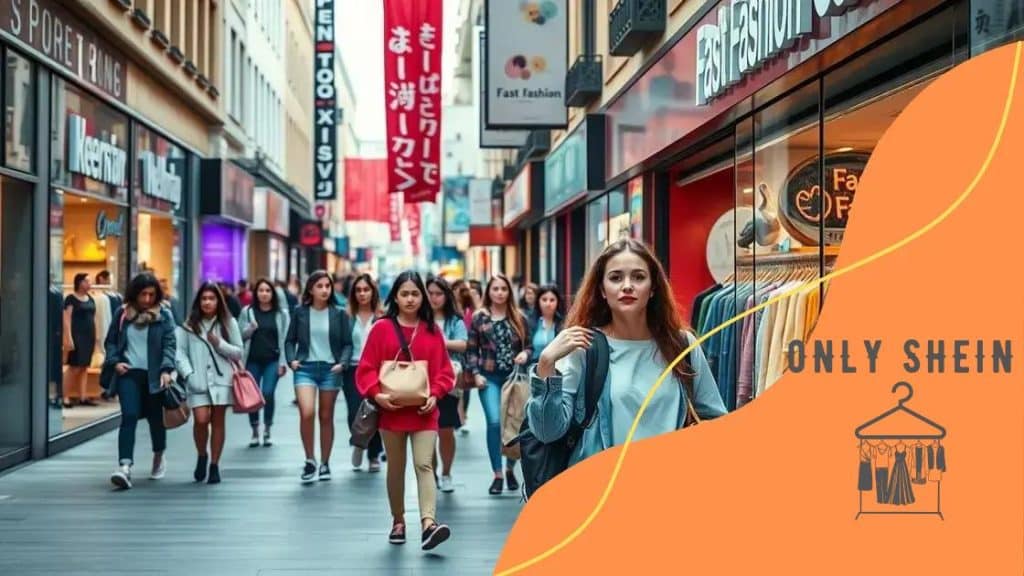The rise of fast fashion with Shein: what to know

Advertisements
The rise of fast fashion with Shein has transformed clothing shopping by offering trendy, affordable options, but it raises significant ethical and environmental concerns, prompting consumers to demand more sustainable practices.
The rise of fast fashion with Shein has transformed the way we shop, leading to instant gratification. Have you noticed how quickly trends come and go? Let’s delve into this captivating evolution in fashion.
Advertisements
Understanding the fast fashion phenomenon
Understanding the fast fashion phenomenon is crucial to grasping today’s shopping habits. With brands like Shein leading the charge, consumers have access to a dizzying array of styles. This surge in fast fashion has reshaped our wardrobe choices and retail landscape.
Fast fashion refers to affordable clothing that mirrors runway trends. The appeal is undeniable, as it allows shoppers to express their style without spending a fortune. However, this rapid turnaround comes at a cost. Let’s explore what makes fast fashion tick and its implications.
The Mechanics of Fast Fashion
Fast fashion operates on a tight schedule. Designers create new styles quickly, responding to social media and consumer demand. The result? Instant gratification for customers but pressure on the supply chain.
Advertisements
Key Characteristics
- Quick inventory turnover ensures that new items are always available.
- Low prices make trendy clothing accessible to a wider audience.
- Frequent collections keep consumers returning for more.
- Collaborations with celebrities and influencers drive hype.
Brands like Shein utilize data analytics to predict and respond to fashion trends almost instantly. This not only streamlines production but also enhances consumer engagement. However, this leads to overconsumption and disposability.
As shoppers, we must consider the impact of our choices. Understanding this phenomenon encourages mindful spending. Are we buying clothes we’ll cherish or just following trends? Reflecting on this question can lead to more sustainable fashion habits.
Shein’s unique business model
Shein’s unique business model sets it apart from traditional retailers. This innovative approach has allowed the brand to thrive in the competitive world of fashion. At its core, Shein combines technology and trend analysis to deliver fast, affordable clothing that captures the attention of young consumers.
The brand utilizes an agile supply chain model. By analyzing data from social media and online trends, Shein can produce clothing that reflects current styles. This ability to quickly adapt is a hallmark of their business.
Key Features of Shein’s Model
Some of the standout aspects of Shein’s business model include:
- Data-Driven Design: Shein uses analytics to predict what styles will be popular.
- Rapid Production: The company can produce new items in just weeks.
- Direct-to-Consumer Sales: Selling online eliminates the middleman, keeping prices low.
- Sustainable Collaboration: Shein often partners with influencers to reach a wider audience.
This model significantly reduces the time between design and delivery, ensuring that products are available while they are still relevant. The result is a constant influx of new arrivals that entice customers to shop frequently. Potential buyers often feel a sense of urgency, as styles can sell out quickly, prompting them to make purchases quickly.
However, Shein’s approach also raises questions about sustainability. The rapid production cycle can lead to increased waste. Consumers should be mindful of the environmental impact of their purchases. By understanding Shein’s unique business model, shoppers can make more informed choices about their fashion consumption.
Impact of Shein on consumer behavior

The impact of Shein on consumer behavior has been profound, particularly among younger shoppers. This brand has changed the way people approach fashion, emphasizing accessibility and speed. With a virtually endless array of styles, consumers often find themselves overwhelmed by choices.
One significant change is the shift in shopping habits. Consumers now expect new releases weekly, pushing them to shop more frequently. This creates a sense of urgency, making them feel they must buy quickly before items sell out.
Shifting Attitudes Toward Clothing
Shein has influenced how many view clothing. Clothes are now often seen as disposable rather than long-lasting. This change is driven by:
- Trendy Pricing: Shein’s low prices make it easy to buy more without guilt.
- Rapid Trends: The fast turnaround of styles encourages a mindset of owning multiple outfits.
- Social Media Influence: Many consumers are inspired by influencers showcasing the latest Shein trends.
Additionally, Shein’s marketing strategies, like collaborations with popular figures, have also shaped consumer preferences. People want to wear what they see their favorite celebrities or influencers model. This leads to quick purchases driven by impulse rather than thoughtful consideration.
As shopping behavior evolves, so does the need for awareness. Understanding the impact Shein has on consumer habits can help shoppers navigate their own choices more mindfully. Are we truly happy with our purchases, or simply caught up in the excitement of the moment?
Environmental concerns surrounding fast fashion
Environmental concerns surrounding fast fashion have become increasingly important in recent years. Brands like Shein have revolutionized the industry, but this rapid production comes with significant ecological costs. As consumers, we must understand the impact of our shopping choices.
Fast fashion contributes to a massive increase in waste. Many clothing items are made quickly and cheaply, often using low-quality materials. Once trends fade, these clothes are discarded, leading to overflowing landfills. In fact, it’s estimated that millions of tons of textile waste end up in landfills each year.
Resource Consumption
The production process for fast fashion is resource-intensive. It requires large amounts of water, energy, and textiles. For instance:
- Water Usage: Producing a single cotton t-shirt can consume over 2,700 liters of water.
- Pesticide Use: Conventional cotton farming often relies on harmful pesticides, leading to soil and water pollution.
- Carbon Footprint: The overall carbon emissions from fast fashion production are significant, contributing to climate change.
Additionally, the use of synthetic fibers such as polyester has raised further environmental issues. These materials require fossil fuels to produce and are not biodegradable. Each wash releases microplastics into our oceans, harming marine life.
As awareness grows regarding these environmental issues, many consumers are reconsidering their shopping habits. Choosing sustainable brands or adopting a minimalist wardrobe can make a difference. By understanding the environmental concerns surrounding fast fashion, we can make more informed decisions that benefit our planet.
The future of fast fashion and ethics
The future of fast fashion and ethics is a complex topic as the industry faces rising scrutiny. As brands like Shein continue to grow, consumers are demanding more transparency and responsibility. This shift may lead to significant changes in how fast fashion operates.
Ethical considerations are becoming more important. Consumers want to know where their clothes come from and how they are made. Many are now seeking brands that prioritize fair labor practices and eco-friendly materials.
Shifts in Consumer Demand
As awareness about the impacts of fast fashion grows, consumer behavior is shifting. More shoppers are interested in:
- Sustainable Practices: Brands that use recyclable materials and sustainable methods attract attention.
- Ethical Labor: Ensuring fair wages and safe working conditions for workers is becoming a priority.
- Transparency: Shoppers expect clear information about the supply chain and production processes.
Fast fashion brands will need to adapt to these demands. Innovations in materials, such as biodegradable fabrics or closed-loop systems, could emerge. This would not only improve their public image but also contribute positively to the environment.
However, achieving a balance between affordability and ethical production is challenging. As consumers push for change, brands must navigate these expectations while maintaining profitability. The dialogue around fast fashion ethics is evolving, and companies must respond thoughtfully to remain relevant.
Ultimately, the future of fast fashion will likely hinge on the industry’s ability to embrace ethical practices. As consumers prioritize sustainability and responsibility, brands who ignore these trends may find themselves falling behind.
FAQ – Frequently Asked Questions about Fast Fashion and Ethics
What are the main environmental concerns related to fast fashion?
Fast fashion contributes to pollution, excessive waste, and resource depletion, impacting the environment negatively.
How does fast fashion affect consumer behavior?
Fast fashion encourages impulse buying and promotes a disposable attitude towards clothing, leading to overconsumption.
What steps can consumers take to make ethical fashion choices?
Consumers can choose sustainable brands, support fair labor practices, and shop less frequently to reduce waste.
How are brands responding to ethical concerns in the fashion industry?
Many brands are adopting sustainable practices, increasing transparency, and focusing on ethical sourcing to meet consumer demands.